Articles and Information:
- Basic Necessities
- Adjustments for Altitude
- Fruit Pectin Levels
- How to make syrup to can fruit
- Basic Conversions for fruits and vegetables
- Canning and Pickling Salt – What’s all the fuss?
- Pressure Canner – Which one I chose and why
- Other great tips for canning!
_______________________________________________________
Basic Necessities for your canning pantry:
Over the last months I have collected a list of basic ingredients that you should accumulate over time to have an efficient pantry for canning.
- Kosher or Canning Salt
- White and Cider Vinegar (5% acidity)
- Sugar and honey
- dried herbs and spices including pickling spice, black peppercorns, mustard seed and red chili flakes
- Bottled Lemon and Bottled Lime juice
- crystallized ginger and dried red chilies
- Fresh Fruit by Ball or ascorbic acid
- Pectin – powdered and liquid
_____________________________________________________________
Adjustments for Altitude:
Canning food safely requires your filled jars to be processed at a specified temperature or pressure level for a specified amount of time. If you live at altitudes higher than 1,000 or 2,000 feet above sea level, adjust your canning recipes for food safety.
-
Water–bath canning: My recipes are written for water bath canning at altitudes less than 1000 feet. If you live higher than 1,000 feet above sea level, follow these guidelines:
For processing times of less than 20 minutes: Add 1 additional minute for each additional 1000 feet of altitude.
For processing times of more than 20 minutes: Add 2 additional minutes for each 1000 feet of altitude.
- Pressure Canning: My Pressure canning recipes are written for altitudes of less than 2000 feet. If you live higher than 2000 feet above sea level, make this adjustment: Increase pounds of pressure by 1/2 pound for each additional 1,000 feet.
_______________________________________________________
Fruit Pectin Levels
High pectin content fruits:
Citrus skins (oranges, tangerines, grapefruit, lemons, limes, etc. – the pectin is high in the skin but low in the fruit), tart cooking apples, crabapples, lemons, wild grapes (Eastern Concord variety), cranberries, gooseberries, boysenberries, sour Apples, Blackberries, Currants, Gooseberries, Loganberries, most Plums (not the Italian kind), and Quinces
(If not overripe, has enough natural pectin and acid for gel formation with only added sugar.)
Medium pectin fruits:
ripe Apples, very ripe Blackberries, sour Cherries, Chokecherries, Elderberries, Grapefruit, bottled Grape Juice, (Eastern Concord), Grapes (California), Loquats, Kumquats, Oranges, Rhubarb (Low in natural acid or pectin, and may need addition of either acid or pectin.)
Low pectin fruits:
Apricots, Blueberries, Sweet cherries, sour cherries, Figs, grapefruit, grape juice, grapes (other than wild and Concord types), melons, Pears, Plums (Italian), Raspberries, Strawberries, Pineapple(pectin) (Always needs added acid, pectin or both)
Very Low pectin fruits:
Nectarines, watermelon, peaches, kiwifruit, guava, and pomegranates. (Always needs added acid and pectin)
_____________________________________________________________________________
Calculations for making Syrups to can whole fruit
| Type of Syrup | Sugar | Other Sweeteners | Water | Syrup Yield |
| Ultra-Light | ½ cup | 5 cups | 5 ¼ cups | |
| Extra Light | 1 ¼ cups | 5 ½ cups | 6 cups | |
| Light | 2 ¼ cups | 5 ¼ cups | 6 ½ cups | |
| Medium | 3 ¼ cups | 5 cups | 7 cups | |
| Heavy | 4 ¼ cups | 4 ¼ cups | 7 cups | |
| Honey | 1 cup | 1 cup liquid honey | 4 cups | 5 cups |
______________________________________________________________________________
Here are some basic conversions for fruits and vegetables:
_____________________________________________________________________________
Canning and Pickling Salt
I have found that there is a common question that keeps coming up when we talk or teach about pickling, “What the heck is Pickling Salt? Why can’t I use the salt in my shaker from the kitchen table?”
Pickling or Canning salt is a particular variety of salt that is used in canning. Canning salt is a fine-grained salt and is iodine-free. It also does not have the anti-caking ingredients used in regular table salt. Now when I
say “anti-caking” I might get a confused look, but I explain that if you let pickling/canning salt sit in a humid place it will bind together. Usually in places where the weather is like this they add grains of rice to the salt shakers to keep it from clumping together.
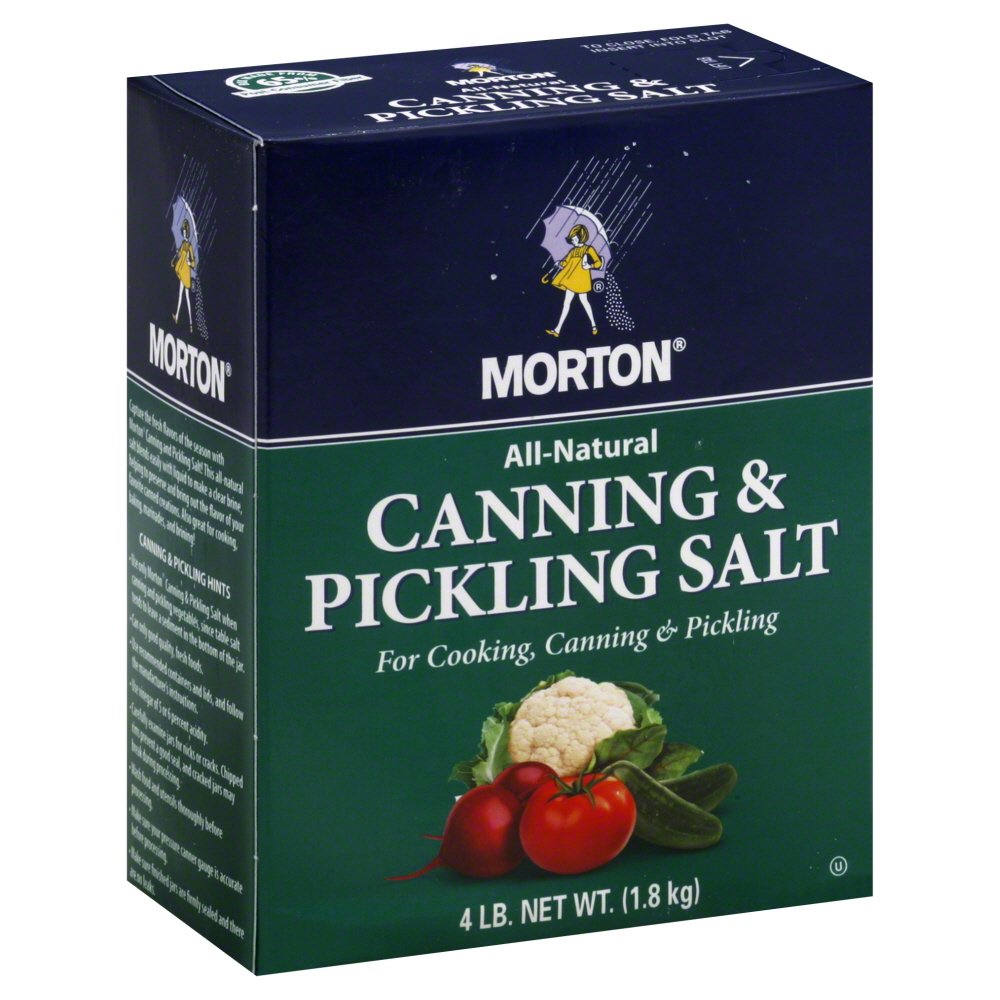
Another important reason to use a pickling salt is that lack of additives means the canning salt will not turn vegetables, especially pickles, a dark color. It will also not make their liquid or brine cloudy. One of the ways that you can tell that a pickled jar has gone bad is a cloudy liquid. Canning salt will create clear brine that is perfect for pickling. One of the other main uses for canning salt is in preserving meats like salt-cured ham or sausage.
Like pickling salt, kosher salt is also free of iodine and also does not have the anti-caking ingredients. It can be substituted but because of the larger grain size there is an adjustment to the quantity. Most recipes if they call for kosher salt will have already been adjusted.
It is vital the cook use the specified amount of salt called for in the recipe so the pickles or meat will be safely preserved.
Things to remember about Canning/Pickling salt when canning:
Salt has no effect on the natural color and texture of canned foods, except for pickles and cured or smoked foods.
The main reason for using salt in canning is to enhance flavor. For recipes that are not pickled or cured the salt can be omitted for people on a low-salt diet.
Do not use salt substitutes in canning. They may cause the color or the flavor of the food to change. Also, they may give foods a cloudy appearance.
Here are some other ways to enhance flavor without salt:
Try adding one tablespoon of lemon or orange juice to each pint of carrots, beets, or asparagus. For green beans and peas, add one-half teaspoon of mace, nutmeg, or curry powder per pint.
__________________________________________________________________________
Pressure Canner – What to purchase!
I was asked to post some advice about which Pressure Canner to purchase for someone who isn’t necessarily a beginner to canning but has never pressure canned before. I did some thinking about the options, Presto, Mirro, All American, and I felt that I can only give you my experience with mine and have true confidence in my advice.
The best canner is one that is the easiest to learn and the one with safety in mind. That is why I bought the Presto 23 Qt pressure canner. I did my research and asked a bunch of questions. I had fears about pressure canners. They are based on some idea of it exploding. With that in mind, I love how easy it is to put on the lid, that it locks securely and you can feel it locking as you twist on the lid. It has safety backups built into it like a lid lock and a pressure release button.
Because it’s a dial gauge canner it has to be tested each year, but there is something about having a “meter” of sorts that makes it easy for me to monitor. I have a gas stove but have testimony from tens of people who use this particular model or the Presto 16 qt version on a glass top stove. I am excited with the 12 or so batches that I have done in my canner. I bought a second rack so that I could double stack them for bigger loads and it was available at their website. For me it’s a great canner and will be with me for a long time. The 16 quart canner is only available with a weighted gauge, but again has the safety built in with the lid lock and pressure valve.
My last advice is to read the instructions about the canner. Get to know the parts and each by name. Practice putting the lid on and off a couple of times. As long as you are attentive to your canner you can always adjust the amount of steam it produces internally. If you stay focused the fears will go away after the first canning! I promise!
________________________________________________________
Tips:
Here are some tips I thought that I would list from my class and continue to post questions that I get asked. I hope that it will be helpful to someone who needs assistance with their possible canning dilemmas.
Do not store your jars with the rings still on. Remove rings so that if you have a bacteria problem the lid can come away from the jar exposing the problem. (ie. smell, lid comes off easily)
If you don’t have an insert use a dish cloth on the bottom of your water bath canner or pot. Never let the jars sit directly on the bottom.
Only use 6 cups of fruit when making a batch of preserves or jelly with pectin or it may not set properly.
Add 2 Tablespoons of vinegar to the water bath and sterilizing water if you have hard water to avoid hard water spots and hard water film on your jars.
Once you remove your jars from the water bath or pressure canner do not move, shake or tilt until the next day when they are cool.
Always label your jars with the contents or name of recipe and the date they were sealed.
Make sure you always clean the rims of your jars. An improper seal can cause a jar to open during pressure canning. For water bath canning it will cause your jars not to seal after you remove them from the water bath. If they don’t pop you can re-water bath them or put them in the refrigerator, they are ready to eat.
Recognize food that has spoiled in jars – Remove the Ring look for mold, cloudy white liquid in your pickling jars, or jar lids that are bulging. Once you’ve opened the jars smell the contents – If it doesn’t smell right immediately pour it out.
Get the best dry spices you can find. Spices will go bad and loose their flavor after six months on the shelves. I personally use Penzeys spices because I can smell the freshness and they also sell them in multiple sizes including bulk. (www.penzeys.com)
Questions:
Susan sent me an email about her jars “popping” as soon as she removed them from the water bath and wondered if they were properly sealed.
The popping of the lids will happen when the jars at the temperature of the water decrease and are exposed to the cooler air temperature. Sometimes that can happen very quickly. As long as the lid has no “give” they are sealed and ready to store.
Green beans: I made a recipe but cut them up into about 1-2″ pieces, thought I packed them in well, but then after processing they all floated so there’s about 1″ of liquid at the bottom. Is this all right and will they store well?
As long as the seal is good they will be fine. The floating usually happens when we don’t remove all of the air and then beans float. It is also true that the beans will have air in them if they are raw packed which happened when we did our dilly beans. It happens to everyone. The big thing is whether the seal is good.
Is it OK to reuse the water in the hot water bath for several sessions perhaps days apart? I warm jars/lids/rings in water w. a little vinegar and then process all the jars in the same container and it’s such a large quantity of water that I thought to save it from one time to the next.
I don’t usually reuse the water just in case i didn’t wipe down the jars on the sides after I have filled them and some of the “food stuff” gets into the water, but if you are careful its better not to waste. I am not always that careful. That “food stuff” may be in the water for the next use and contaminate your water.
Vinegar: I found some sherry vinegar of 8% acidity. Is this higher %age OK to use instead of the usual 5% in recipes?
Anything that is 5% or higher is USDA approved for canning. If you like the flavor of sherry vinegar go for it.

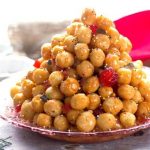
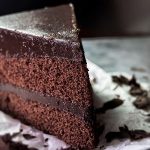
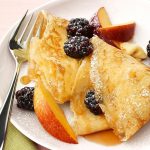
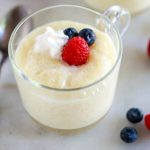
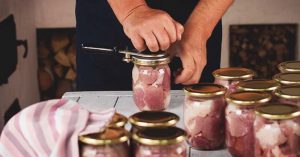
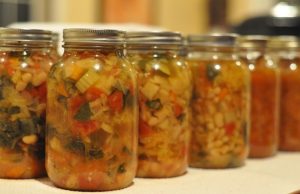
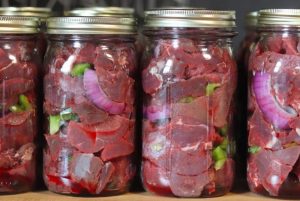
One Comment
Jean Bell
Posted on: January 19, 2019What does PC in the recipe for Piccalilli stand for?